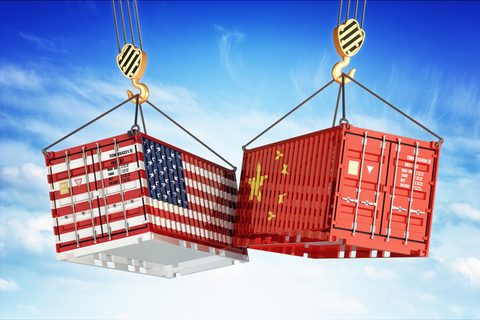
U.S. chip and components manufacturers are nervous about the U.S. trade position with China because many Chinese companies buy and use many billions of dollars of U.S.-made electronics products every year.
Simply put, U.S. chipmakers don’t want to lose the enormous Chinese market to sell chips into, analysts said in recent interviews. The lucrative Chinese market is the main reason that chipmakers and other electronics manufacturers have recently sought licenses to get around the U.S. Commerce Department’s blacklisting of Huawei, said Jack Gold, analyst at J. Gold Associates. The status of issuing such licenses is unclear.
None of the major chip or components makers will talk publicly about the direction they want U.S.-China trade talks to go, amid reports about whether the talks will resume in earnest. But chip executives have told FierceElectronics in recent interviews that they don’t want to forfeit the ability to sell to China, or even see a significant reduction in sales to Chinese OEMs.
In public, some companies have talked generally about concerns over trade, often without naming China or President Trump specifically.
“Prolonged stress to free trade and cross border business are dampening effects to the components business,” said Arrow Electronics CEO Michael Long in a recent call with analysts. “Escalating trade wars have resulted in expanded tariffs and abandoned business with a large customer of components,” likely referring to Huawei.
Arrow’s dealings with companies in Asia-Pacific have been the worst, he said, adding, “we fully expected growth there and it just didn’t happen. It was like a spigot got turned back. I don’t see anything is going to change between now and the end of the year as far as a slowdown in components.”
In June, Broadcom forecast a $2 billion revenue blow over uncertainty about U.S.-China trade tensions and the Huawei export ban.
Chip executives make such remarks even though they generally admit they are grateful to U.S. President Donald Trump for pushing back against theft of IP by Chinese companies for many years. They asked not to be identified or have their companies named.
“U.S. companies are understandably concerned with China on IP theft and getting fair access to markets, but on the other hand they can’t be seen by China as supporting tariffs,” said Patrick Moorhead, an analyst at Moor Insights and Strategy. “I think U.S. executives are doing what they need to do—walking the fine line between getting what they want from China and the U.S. government. The reality is that China has asymmetrical rules for dealing with the U.S. and it needs to change.”
In 2018, U.S. exports to China of semiconductors and a wide range of components and sensors were counted by some economists as part of several trade categories, including electrical machinery, which totaled $13 billion; other machinery ($14 billion), optical and medical instruments ($9.8 billion) and vehicles ($9.4 billion), according to the Office of the U.S. Trade Representative.
The true dollar value could be far higher, given some U.S. components are sold into other Asian countries like Taiwan or Vietnam where they are pieced together with other parts and then sold to Chinese companies.
The 2018 trade deficit with China in electrical machinery (an unusually broad category that includes some semiconductors and components but not all) was $139 billion, reflecting U.S. imports totaling $152 billion and U.S. exports of $13 billion. U.S. electronics companies want that $13 billion export level to rise, not fall.
A recent note to investors by UBS analysts describes the important position that China holds for semiconductor makers in the U.S. It will take China at least five years to replace US semiconductors being used there, UBS said. “When we look at China’s AI capabilities, we see it as mostly world class, but the weakest area is in semiconductors,” UBS said, led by analyst Bill Lu.
Intel, Nvidia, AMD and others have been providers to Chinese OEMs, but there are many others. There are dozens of U.S. companies that sell components and sensors into China as well, including large firms such as TE Connectivity.
China’s Ministry of Industry and Information Technology said last year that China relies on imports for more than 95% of high-end chips used in processors and for the majority of its memory chips.
Despite this dependence on U.S. semiconductors, China is the strongest in collecting real world data for use in AI and other applications. China “could achieve global leadership by 2030,” UBS said.
The Chinese government is leading an effort to become self-sufficient, even in semiconductors. The “Made in China 2025” initiative sets a goal of 70% production of semiconductors in China by that year, but UBS wrote, “there is essentially no path to replace US semiconductors in the next five years.”
UBS added, “Longer-term efforts are underway to internally develop chips. We are told that there are now over 100 chip design companies, up from roughly 50 a year ago.”
[“source=fierceelectronics”]
| M | T | W | T | F | S | S |
|---|---|---|---|---|---|---|
| 1 | 2 | 3 | 4 | 5 | 6 | 7 |
| 8 | 9 | 10 | 11 | 12 | 13 | 14 |
| 15 | 16 | 17 | 18 | 19 | 20 | 21 |
| 22 | 23 | 24 | 25 | 26 | 27 | 28 |
| 29 | 30 | |||||
























